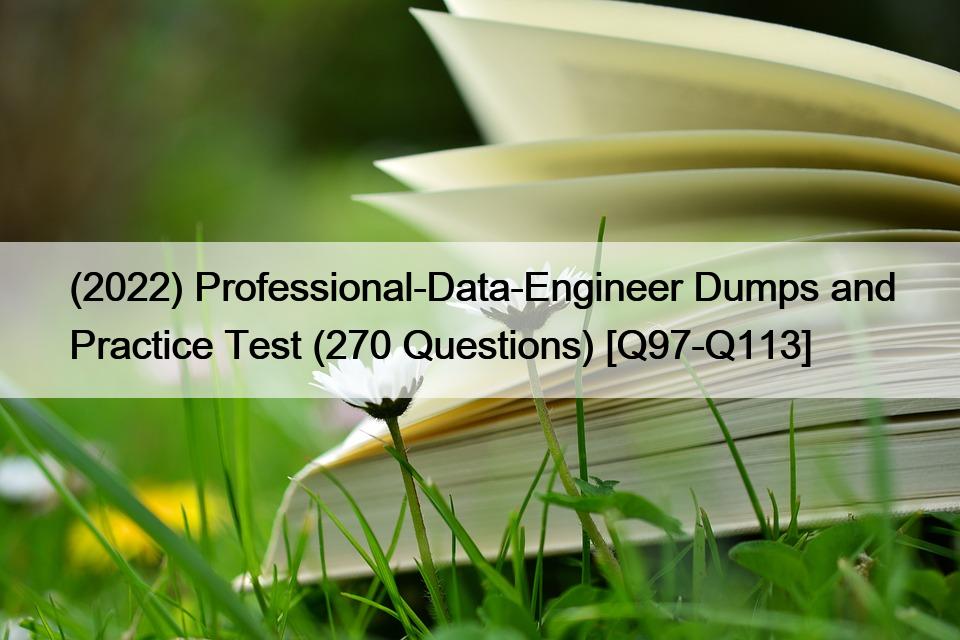
(2022) Professional-Data-Engineer Dumps and Practice Test (270 Questions)
Guide (New 2022) Actual Google Professional-Data-Engineer Exam Questions
Operationalizing Machine Learning Models
Here the candidates need to demonstrate their expertise in using pre-built Machine Learning models as a service, including Machine Learning APIs (for instance, Speech API, Vision API, etc.), customizing Machine Learning APIs (for instance, Auto ML text, AutoML Vision, etc.), conversational experiences (for instance, Dialogflow). The applicants should also have the skills in deploying the Machine Learning pipeline. This involves the ability to ingest relevant data, perform retraining of machine learning models (BigQuery ML, Cloud Machine Learning Engine, Spark ML, Kubeflow), as well as execute continuous evaluation. Additionally, the students should be able to choose the relevant training & serving infrastructure as well as know how to fulfill measuring, monitoring, and troubleshooting of Machine Learning models.
Understanding functional and technical aspects of Google Professional Data Engineer Exam Building and operationalizing data processing systems
The following will be discussed here:
- Batch and streaming
- Transformation
- Lifecycle management of data
- Adjusting pipelines
- Building and operationalizing processing infrastructure
- Testing and quality control
- Effective use of managed services (Cloud Bigtable, Cloud Spanner, Cloud SQL, BigQuery, Cloud Storage, Cloud Datastore, Cloud Memorystore)
- Migrating from on-premises to cloud (Data Transfer Service, Transfer Appliance, Cloud Networking)
- Building and operationalizing data processing systems
- Awareness of current state and how to migrate a design to a future state
Professional-Data-Engineer Exam Dumps Pass with Updated 2022 Certified Exam Questions: https://www.validexam.com/Professional-Data-Engineer-latest-dumps.html






Leave a Reply